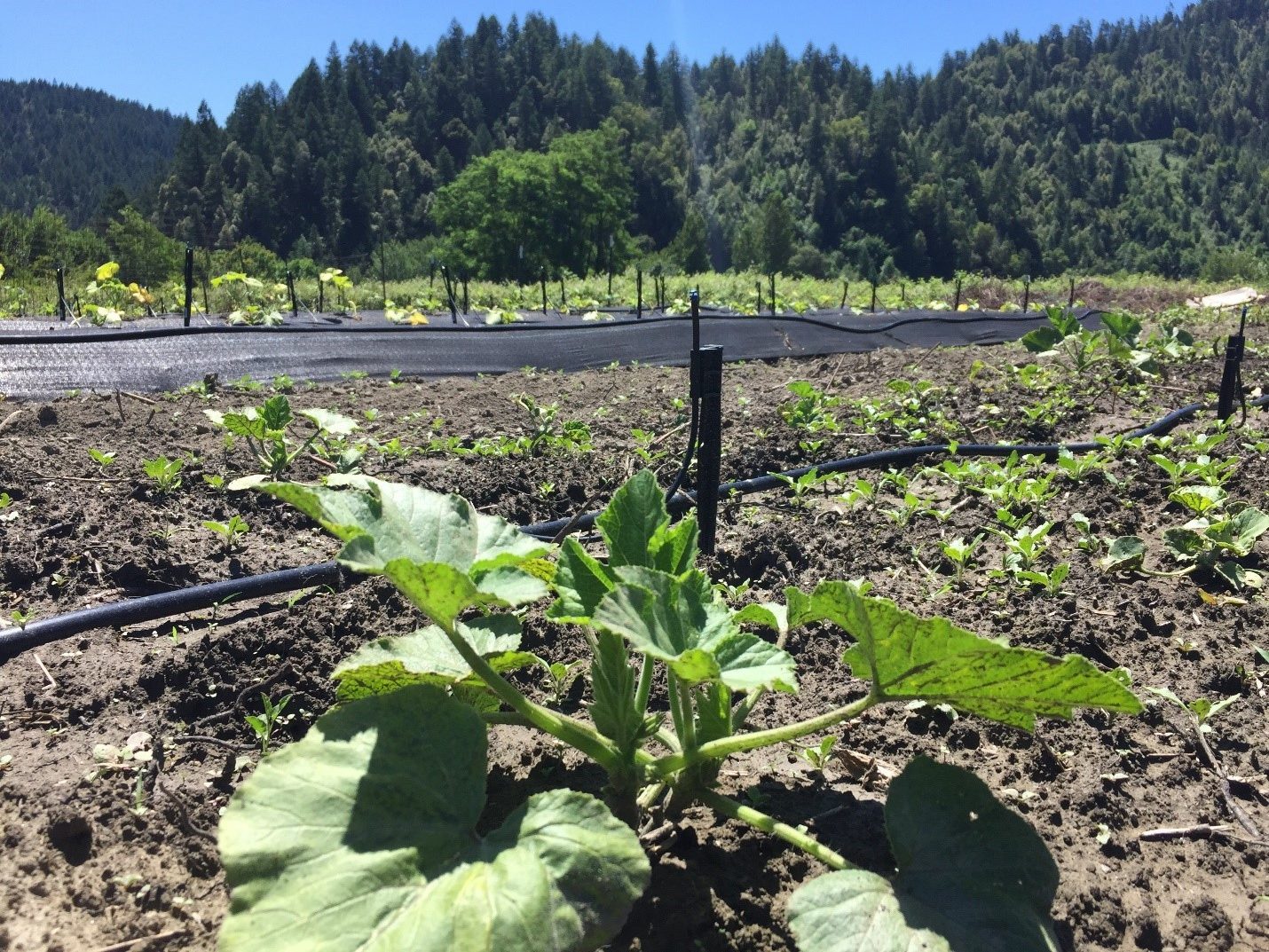
One year in for the Tishaniik Community Farm and KDNR foodbox projects
Many thanks to Bill Tripp, Jasmine Harvey, and Earl Crosby for contributing to this story
In March 2020, Karuk Dept. of Natural Resources (KDNR) employees and volunteers knew food security would be a top priority as the pandemic crashed across the region. Even as employees were put on administrative leave due to the shutdown, they were adamant about ensuring their communities had food. Fallow organic farmland owned by the Tribe became the Tishaniik Community Farm (the Farm) while, independently, a foodbox distribution program took shape. One year later, these now-intertwined KDNR efforts have grown, shifted, and adjusted, but food security for the community remains central.
This spring, Jasmine Harvey, KDNR Outreach and Sustainability Planning Coordinator, is looking forward to a “bigger head start” for the Farm as they explore self-sustaining activities. Central to the Farm mission is that it is in service to the community, and that the crops grown and harvest distribution remain culturally appropriate. After all, as KDNR Director Bill Tripp reminds, “we’ve avoided becoming farmers for over a hundred years” (despite constant pressure from colonist governments). And, the same time, Karuk members and all those within Karuk Ancestral Territory do eat a lot of farmed produce. KDNR remains centered on revitalizing traditional food and fiber resources in the Territory while simultaneously investing in increased community access to fresh fruits and vegetables through their farm and food box programs. New developments include hiring a Garden Manager and investing in a tractor with implements and preservation equipment (for canning and drying). Additionally, KDNR anticipates leveraging cultural food distribution networks (identified as key to food security under a previous Karuk-UC Berkeley Collaborative project) as they expand Farm and foodbox distribution systems.
Success of the Farm and foodbox distribution program during COVID relied on support from Tribal Council, committed KDNR employees, and a slew of volunteers. While most Tribal offices were shut, multiple KDNR employees were able to come off administrative leave since their food security responsibilities were categorized as essential or part of the COVID emergency response. KDNR also successfully partnered with the Karuk Health Department to develop culturally-appropriate healthy meals for community members in need, building up the capacity of both departments to provide better service. As Earl Crosby, Deputy Director of KDNR Watersheds Branch, puts it, “a lot of people pulled together” to make all of this happen.
Even as these projects become part of abiding programs and systems within DNR, Jasmine Harvey wants to keep the grassroots energy of the past year. Fundamental to the success of the Farm and food box programs have been collective financing and volunteer efforts which means YOUR involvement is needed!
Contact Jasmine about (COVID-safe) volunteer opportunities at jharvey@karuk.us and/or consider donating to DNR’s capital campaign. This campaign feeds into the Endowment for Eco-Cultural Revitalization, a long-term funding mechanism for KDNR and related work within the Karuk Ancestral Territory. Here’s to that head start for spring 2021!
